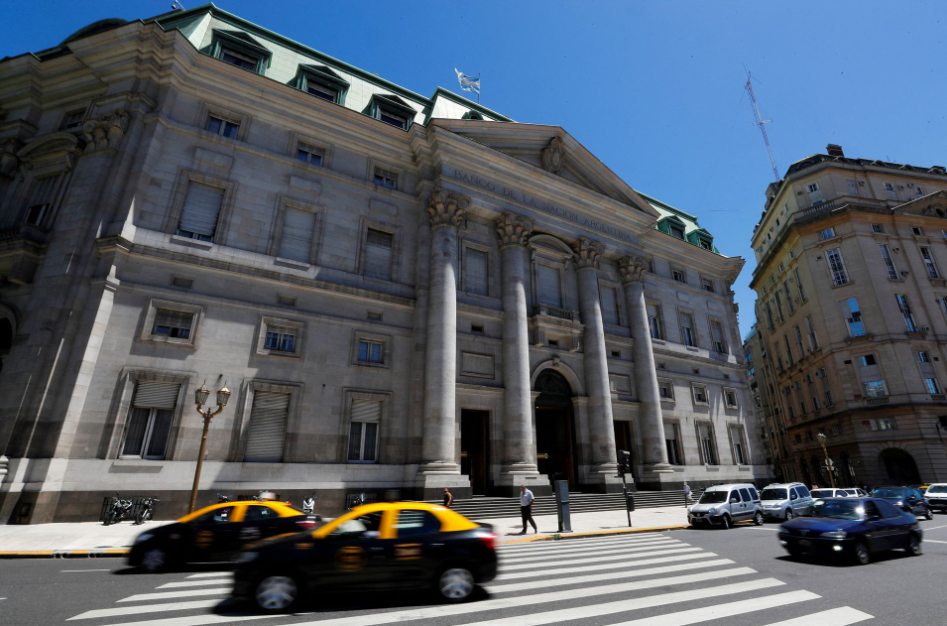
(Reuters, 5.Apr.2023) — The International Monetary Fund (IMF) has given Argentina something of break by easing economic targets in its $44 billion loan deal, but some rosier-than-reality program forecasts may be setting the South American country up for more failure.
The IMF this week cut the level of foreign currency reserves Argentina needs to build up by the end of this year by $1.8 billion, citing a major drought that has hammered production of top exports soy and corn. It sharply lowered the target for Q1.
But, analysts pointed to some “optimistic” presumptions in the Washington-based lender’s review of the country, saying that inflation aims, crop production, fiscal targets and even reserves buildup aims already looked out of Argentina’s reach.
The IMF pegged 2023 inflation at 60% versus most analyst forecasts above 100%. It has trimmed its outlook for main cash crop soy, but at 45.5 million tonnes soars above local grains exchanges forecasting a harvest of 25 million to 27 million tonnes. Its growth forecast at 2% jars with many predicting a contraction.
“In our assessment, these forecasts are overly optimistic,” Sergio Armella at Goldman Sachs wrote in a report, adding Argentina seemed unlikely to have even met adjusted reserves and fiscal targets for the recently completed first quarter.
Armella added that Argentina, the IMF’s biggest debtor, would face rising pressures later in the year as the country barreled toward elections in October where the government faces a battle to hold onto power, with poverty levels rising.
“The risk that authorities deviate further from the program’s targets will increase ahead of the Oct presidential elections and the (primary) elections in the summer,” he said.
An IMF spokesperson said that a revision is forthcoming in the world economic outlook, and the Fund “will assess all end-March targets in the next review.”
COMMITMENT TO THE PROGRAM?
Argentina – a serial defaulter which has long battled high inflation, currency weakness and indebtedness – struck a $57 billion deal with the IMF in 2018 to try and fix its economic woes. That deal failed and a new program was agreed last year.
However, high global prices linked to the war in Ukraine and one of Argentina’s worst-ever droughts has hit the country’s ability to stabilize its economy and build up much-needed foreign currency, putting even the new deal under pressure.
“A commitment to stick to the program … could become more challenging as the election approaches,” said Stuart Culverhouse, chief economist and head of fixed income research at Tellimer Research.
“Evidence of weakening commitment, across the political spectrum, could endanger the completion of upcoming reviews.”
Those reviews of how Argentina is doing against its economic targets are linked to scheduled disbursements of funds. Failure to meet the targets could stall the program or force the IMF to adjust the targets further.
Kimberley Sperrfechter, Latin America economist at Capital Economics, wrote in a note that it remained a “tall order” for Argentina to meet its reserve accumulation target by year-end, despite it being cut to $8 billion from $9.8 billion.

The IMF net reserve targets are the amount Argentina needs to accumulate over time above a baseline of $2.277 billion at the end of 2021. IMF officials said that by March 23 net reserves were around $1 billion below the March-end target.
“The historic drought afflicting Argentina will cause a steeper contraction in GDP than most expect this year and intensify balance of payments strains by reducing export earnings to the tune of 2-3% of GDP,” she said.
“That will make it hard to meet the IMF’s (downwardly revised) FX reserve target and increases the risk of a disorderly devaluation.”
____________________
Reporting by Rodrigo Campos in New York and Jorgelina do Rosario in London; Editing by Adam Jourdan and Jonathan Oatis

